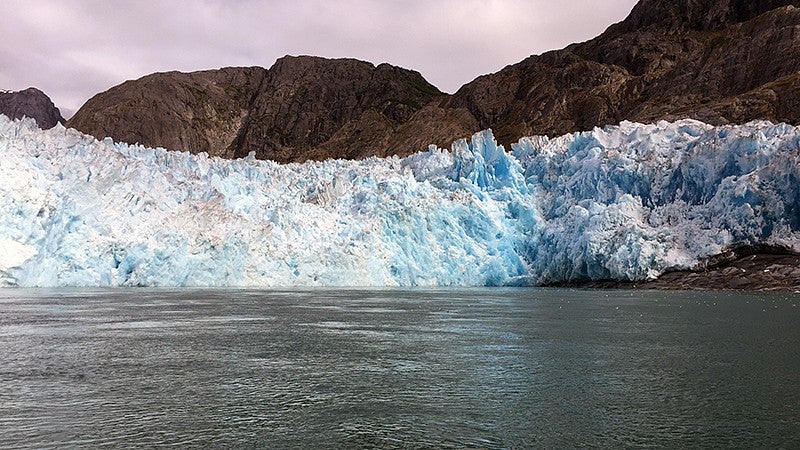Efforts to study how glaciers melt where they meet seawater, using an approach pioneered by University of Oregon oceanographer Dave Sutherland and colleagues at Oregon State University, have been bolstered with a $2.2 million grant from the National Science Foundation.
Advancing the research, to be done at Alaska's LeConte Glacier near Petersburg, about 110 miles southeast of Juneau, could deliver scientists a refined method to improve projections of glacier loss worldwide amid anticipated sea-level rise in a warming climate.
"We will explore the physics of the ice-ocean interface, that small boundary layer right where the fjord and glacier front meet," said Sutherland, an associate professor in the UO's Department of Earth Sciences. "You can imagine that's a hard place to get data from, as icebergs crash down and ocean currents are swirling around."
The four-year grant begins Oct. 1. It provides $1.96 million to support advancements to Oregon State's autonomous boat operations and data-collection tools that will be vital for the high-risk project to observe tumultuous waters as close as possible to the face of the tidewater glacier. The grant also covers the mentorship and participation of students, two early career women scientists and K-12 educational outreach.
The UO's portion of the grant, $253,192, will help cover expenses for underwater imagery, Sutherland said. The funds also will support Sutherland's graduate student Nicole Abib, who is exploring the calving of glaciers as melting produces freshwater that flows out near the ocean surface and drives a return flow that draws in deep warmer ocean water toward the glacier.
In July 2019, a Sutherland-led team published results of the first field tests that produced findings counter to a long-used theory on melting under glaciers. The findings, in the journal Science, suggested that melting was potentially occurring at two orders of magnitude, or some 100 times, faster than predicted.
"This NSF award provides an exciting new opportunity to leverage OSU's strength in oceanography and robotic technologies to make the first direct measurements of ice melt beneath the dangerous calving ice cliffs of a tidewater glacier" said OSU oceanographer Jonathan Nash, who is the grant's principal investigator. "These observations are a key element necessary to better predict the severity of sea level rise driven by our changing climate. Never before have measurements like this been possible."
Imagery will be done using multibeam sonar mounted on a small, remotely operated vehicle to be used in conjunction with the deployment of a first-of-its-kind network of coordinated underwater acoustic, optical and unmanned sensors.
The UO's part of the project will begin in the second year of the grant, Sutherland said.
The ultimate goal of the project, he said, is to determine if small spatial changes in the glacier's shape or small time variations in ocean currents near the glacier's face are what ultimately control the large-scale response to ocean forcing.
In addition to Nash and Sutherland, the project also involves glaciologist Erin Pettit, coastal engineer Meagan Wengrove and numerical modeler Eric Skyllingstad, all at OSU, and oceanographer Rebecca Jackson at Rutgers University.
The NSF grant was announced in a joint statement issued by U.S. Sens. Ron Wyden and Jeff Merkley of Oregon.







